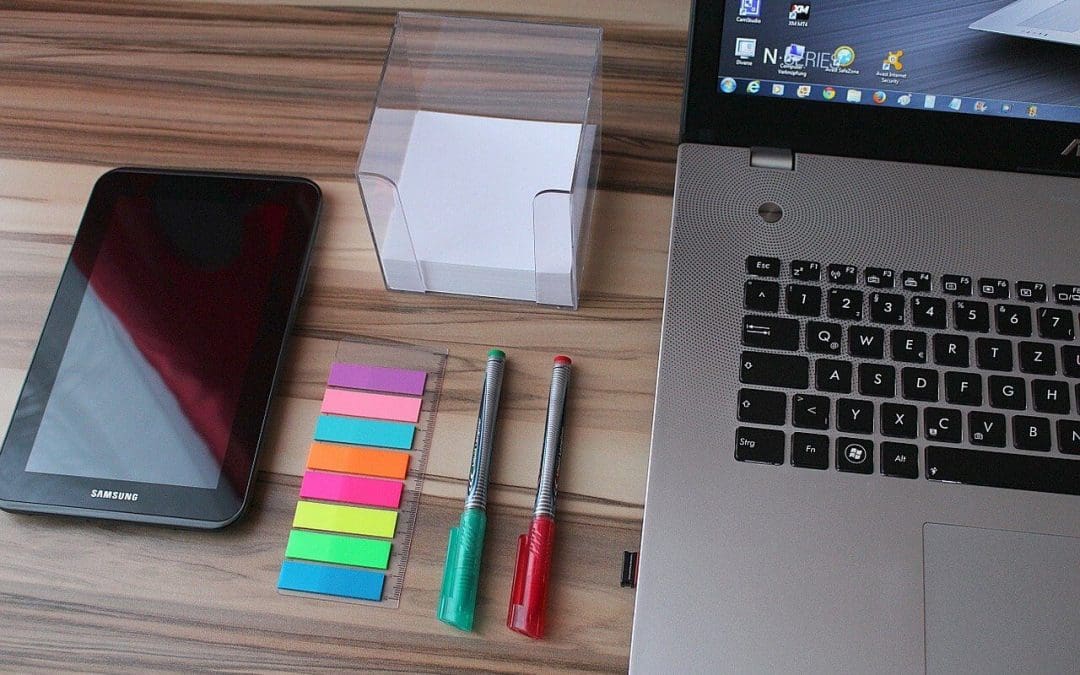If you’re among the millions working from home, you may feel like your home office needs an upgrade. Whether you’re using a spare bedroom, the kitchen table, or even just a corner of your living room, setting aside a dedicated space for work helps you stay focused and be more productive. Check out these ideas to create a home office that works for you.
1. Create a Home Office: Establishing a Dedicated Workspace
Working from the sofa might be comfortable, but it’s not conducive to getting things done. If possible, set up a work area in a room with a door you can close when you need to focus. If that’s not an option, place your desk in the corner of the room to set a physical boundary between the work and living areas.
To help family members know when you’re working, hang a sign with your office hours on the door. Even young children can learn that their parent needs to focus during certain times of the day.
2. Install Good Lighting
Eye strain contributes to fatigue and headaches. To avoid these problems, make sure your workspace has adequate lighting. Position your desk near a window to take advantage of natural light during the day. Supplement with lamps or overhead lighting as needed. A variety of lighting options makes your office well-lit and functional.
3. Invest in Comfortable Seating
You’ll spend a lot of time in your office chair, so it’s worth investing in one that’s comfortable and supportive. Look for an adjustable chair that allows you to adjust the height, back positioning, and armrests to suit your body type and needs.
4. Declutter and Organize to Create a Home Office
Reduce distractions and make it easy to find what you need by decluttering and organizing your workspace. Dedicate shelves or drawers to specific items like office supplies, documents, and electronics so everything has its place (and you’re not scrambling to find the stapler every time you need it).
5. Personalize the Space
Make your office feel cozier by adding personal touches like photos of friends and family, inspiring quotes, or potted plants. A little bit of greenery will do wonders for a home office. Houseplants help boost your mood, improve air quality, and contribute to better focus.
You’ll create a functional and comfortable home office following these simple tips.
Create a Home Office FAQs
What are some tips for maintaining work-life balance when working from home?
Set specific work hours and stick to them to help separate work from personal time. Create a routine that includes regular breaks and a clear end to your workday. Don’t work in common relaxation areas, like the bedroom or living room, to maintain a mental separation between work and leisure. Make time for physical activity and social interactions to support overall well-being.
What are some budget-friendly ways to furnish a home office?
To furnish your home office affordably, look for second-hand furniture, repurpose items you already own, or consider DIY projects. Make a simple desk from a sturdy table, or create bookshelves using crates or cinder blocks. Prioritize ergonomic seating and proper lighting for comfort and productivity.
What technology do I need for a home office?
The technology you need depends on your work requirements. At a minimum, you’ll need a reliable computer or laptop, a strong internet connection, and a phone. Depending on your work, you may also need a printer, scanner, or specialized equipment. To protect your devices, surge protectors and backup power supplies are helpful.
Can I create a home office in a shared space?
Yes, you can create a home office in a shared space by setting up clear boundaries. Use dividers, curtains, or a strategically placed bookshelf to create a distinct work area. Communicate with others in the household about your work schedule and the importance of maintaining a quiet environment during work hours.
How can I ensure good ergonomics in my home office?
Good ergonomics are crucial for preventing strain and injury. Position your monitor at eye level, keep your feet flat on the floor, and make sure your chair provides proper lumbar support. Your keyboard and mouse should be at a comfortable height to prevent wrist strain. Take regular breaks to stretch and move around to reduce the risk of repetitive strain injuries.
Imperial Inspection Services offers inspections to home buyers and sellers in Central Iowa. Contact us to schedule an appointment.

